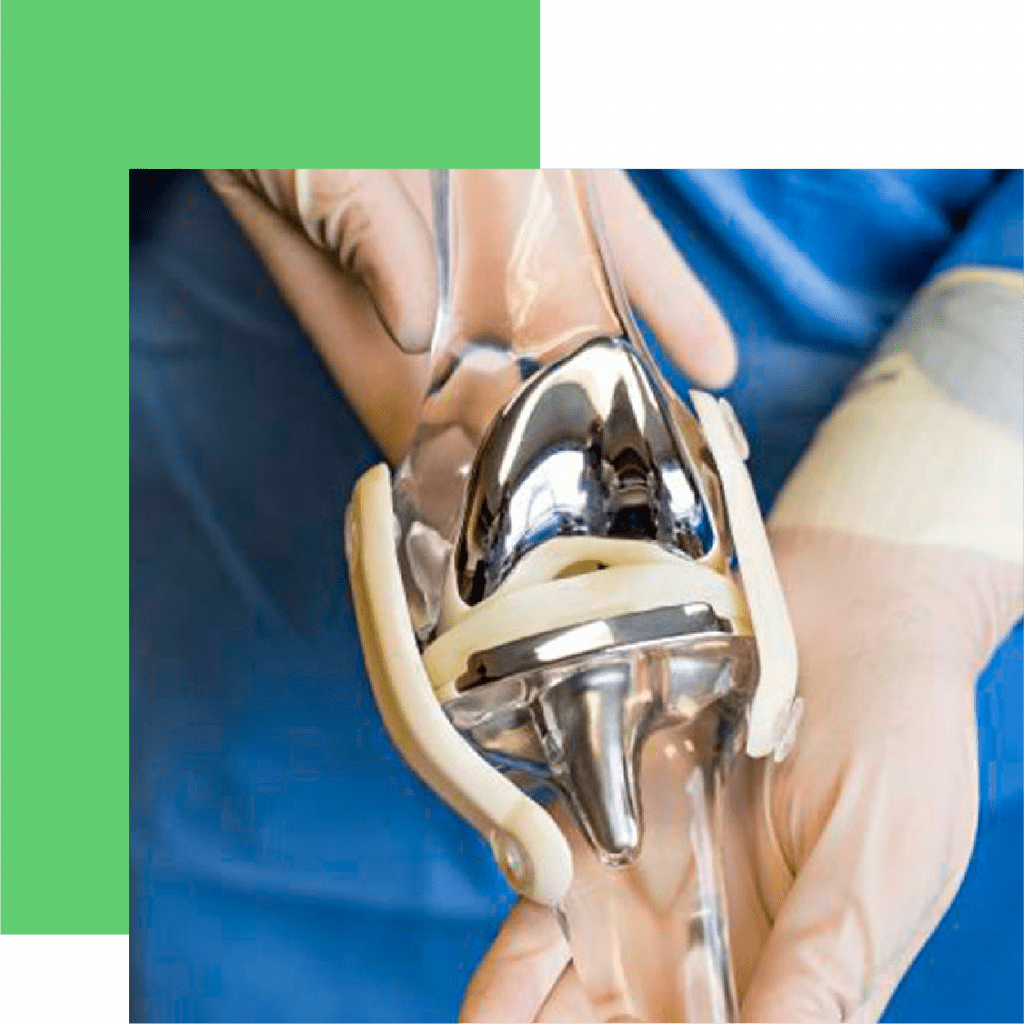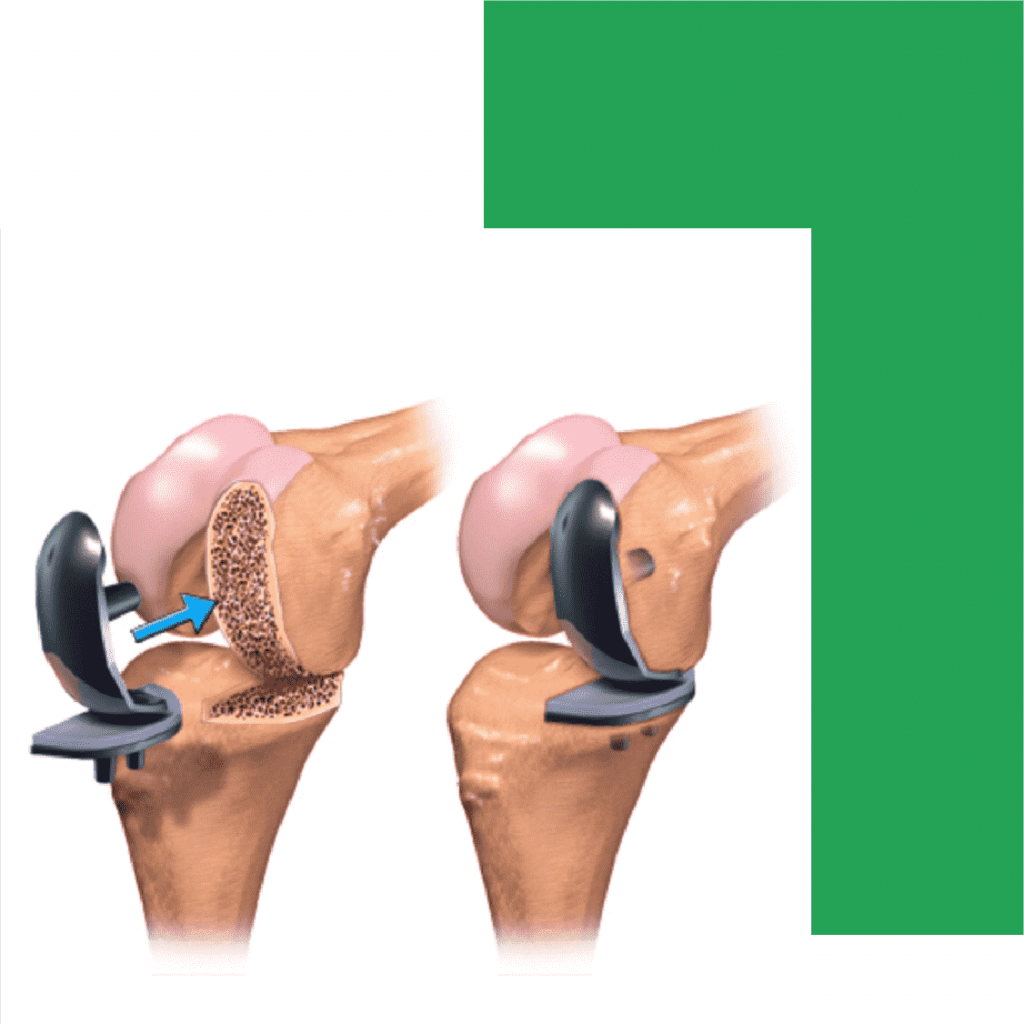KNEE REPLACEMENT SURGERY
Knee Replacement Surgery can help ease the pain caused by severe arthritis.

What Is Knee Replacement Surgery?
You can’t move like you used to. It’s painful to walk the dog, climb a flight of stairs, or simply get out of a chair. You’ve tried medicines, injections, and physical therapy. Nothing seems to work. If that’s the case, it could be time to consider knee replacement surgery.
Also known as arthroplasty, knee replacement surgery is one of the most common bone surgeries in the United States. It can help ease the pain caused by severe arthritis. It also may help you move more freely. U.S. doctors perform more than 600,000 knee replacement surgeries each year, many of which are now being done robotically.
During surgery, an orthopedic surgeon removes the damaged part of the knee and replaces it with an artificial joint made of metal and plastic. The artificial joint is then attached to the thigh bone, shin, and kneecap with a special material such as acrylic cement.
Why Would I Need Surgery?
Osteoarthritis is the main reason why people go for knee replacement surgery. The age-related condition is very common and occurs when cartilage -- the cushion between the knee and the bone joints -- breaks down.
Other reasons include:
- Rheumatoid arthritis: Rheumatoid arthritis is when the body’s immune system attacks and destroys the lining of the knee.
- Deformities: People with bowed legs or “knock-knees” often get surgery to restore the position of the knee.
- Knee injuries: A broken bone or torn ligaments around the knee sometimes will result in arthritis that causes great pain and limits your movement.
Different Types of Surgery
There are 5 main types of knee replacement surgery:
• Total knee replacement. This is the most common form. Your surgeon replaces the surfaces of the thigh bone and shin bone that connects to the knee.
• Partial knee replacement. If arthritis affects only one side of your knee, this surgery may be a possibility. However, it’s only right for you if you have strong knee ligaments and the rest of the cartilage in the knee is normal. Partial knee replacement can be performed through a smaller cut than is needed for total knee replacement.
• Patellofemoral replacement. This replaces only the under-surface of the kneecap and the groove the kneecap sits in. This can be very effective for
people with chronic kneecap arthritis.
• Complex (or revision) knee replacement. This
procedure may be needed if you have very severe arthritis or if you’ve already had two or three knee replacement surgeries.
• Cartilage restoration: Sometimes when the knee only has an isolated area of injury or wear this area can be replaced with a living cartilage graft or cells which grow into cartilage.
DIFFERENT DESIGNS
Knee replacement surgery, which can take 1 to 2 hours, has become so precise that doctors can choose from a variety of knee designs that suit your height, weight, and activity level. The implants, as they are called, are made from a variety of materials, including metal, ceramic, or plastic. They are built to allow easy movement. Some implants are made just for women -- to closely match their anatomy.
A common artificial knee design replaces the PCL (posterior cruciate ligament), located in the back of the knee. Another replaces the ACL (anterior cruciate ligament). Some artificial knees are designed for partial knee replacement, while others are built to keep the PCL and ACL right where they are.
How Long Do They Last?
Doctors first started replacing knees in the early 1970s. Back then, surgeons said the new knees would last about a decade or so. Today’s implants will last 20 years. By 2030, it’s estimated doctors will perform about 450,000 total knee replacement surgeries a year.







